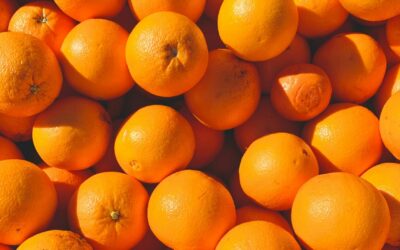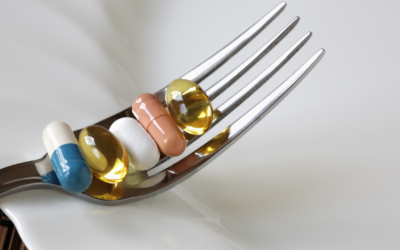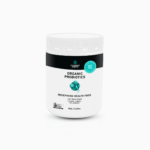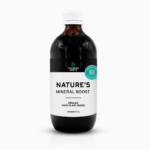Supplement sales in Australia are a multi-million dollar industry, growing at a fast rate. And that’s a good thing – right?
Well let’s really look into this and see if it is good for the health of the nation. 95% of the supplements on the shelves are combinations of synthetically made vitamins and mined minerals produced in a couple of chemical factories around the world. In Australia there
are a few companies that combine the vitamins and minerals and then white label for 100’s of supplement companies. In other words many supplement companies use the same ingredients they just differ in the amounts of nutrients they put in each capsule or tablet.
Both tablets and capsules all are made up of ingredients that are not necessarily good for health but are never disclosed on the label. Protein powders, sports drinks, sports supplements are much the same, many are filled with isolates, preservatives, artificial sweeteners and dubious ingredients. In fact June 2012 one substance found in supplements was banned because of its link to high blood pressure and vomiting. Food Standards Australia and New Zealand advised any product with (DMAA) 1, 3 dimethylamylamine should be disposed of immediately.
I don’t know about you but I’m not prepared to be part of some huge experiment that we blindly become participants of if we do not take the time to become conscious consumers of food and supplements.
So for a few decades now I have chosen not to take synthetically made vitamin and mineral supplements. When my children were young was when I really became aware of the supplement market. I was giving my children – a child supplement. When I read the ingredients I noticed there were no sugars or flavours listed on the ingredient list but when I tasted the supplement, I knew that there was a sweetener and flavour. So I called the company and asked how the supplement was sweetened. They told me they used an artificial sweetener and natural flavour. This was a reputable company and I was appalled.
I felt that if this reputable company would use these types of additives then were they all that ethical. I decided to investigate where they got their vitamins and minerals from. After a few phone calls I traced the vitamins back to a German chemical company. I also found that the minerals were mined minerals and not from plant sources. A scientist will say that there is no difference, but throughout our evolution at no point in time have we ever taken vitamins and minerals without carbohydrates, proteins, amino acids or fats connected to them. Nor have we ever taken Vitamin A by itself or Iron by itself, they were always combined with other nutrients.
Many supplement companies say to take your vitamins and minerals with food, but I still do not believe that this is what nature intended and like I’ve said before I’m not prepared to be part of the experiment.
Many people say that after they take their supplements that they feel better and have more energy. This of course will be the case if you have a poor diet low in nutrients then the supplements will definitely help, but in the long term I do not believe it is good for overall health.
More than two decades ago there was a research project on Vitamin A. A large population of men were involved. Half took a sugar pill (placebo), the other took Vitamin A, neither group knew what they were taking. The study was to go for 10 years, but after 7 years they stopped the study because the men taking the Vitamin A were statistically being diagnosed with more lifestyle diseases such as heart disease, cancer and diabetes then the group taking the sugar pill. At first I was puzzled but I realised that Vitamin A is never found in nature by itself, it is always in combination with many other vitamins, minerals, amino acids, saccharides and fat.
Dr Terry Wahl famed by her presentation Mind Your Mitochondria on www.TED.com showed how supplements were useful but had a minimal impact on her disease (Multiple Sclerosis). When she changed her diet from a processed standard Australian/American diet to a meat, fish, chicken, lots of greens, fruit, nuts and real food (nothing packaged) then she was able to get out of her wheel chair and start to run and ride her bike and horse again. She noticed in one month an improvement. It wasn’t the supplements but the food that made all the difference.
There is a lot of talk about super foods, to me every real fresh food is a super food capable of making our body healthier, fitter and leaner. And if you want an extra oomph with your nutrition then consume food supplements that are made from foods; like colloidal minerals, green powders packed with real vitamins and fermented foods such as our probiotics, all available from Changing Habits. There is nothing in the Changing Habits range that I would not use on a daily basis, they are all food based and all our future foods will be based on the philosophy of Changing Habits Changing Lives.
I’ve been in Africa this past month and I’ve visited many health foods stores and talked to the locals in Botswana.
The Baobab Tree ( a local tree) bears a fruit that is very high in nutrition, especially vitamin C. The locals eat it and I noticed some health food stores have the powder of the fruit available as a super food – high in vitamin C. I had a young local girl get the fruit for me from a tree at a campsite I was staying at. She opened it and then invited me to taste it. When the fruit is opened it is full of seeds with a white dry powdery flesh around the seeds. You suck on the seed to extract the dry flesh, which has an almost tart acid taste. This is what nutrition is all about, eating foods in their natural state and enabling the body to use the nutrients (macro and micro) in order to be healthy. You may find this soon on the Changing Habits whole food products – I’ll keep you informed.
While micro nutrients (vitamins and minerals) can be made synthetically or mined we also have to be cautious of the macro nutrients (proteins, fats and carbohydrates (sugars). Science and technology have figured out how to make these foods or extract them. None are found in nature alone. Protein isolates, such as soy, whey and pea protein isolates are something that I’m very wary of, especially if they are extracted using industrial and chemical means. Fats such as fractionated, interesterified and hydrogenated, as well as olestra are fats that I leave off my dinner plate due to; firstly they are not something the body has evolved to eat and secondly I’m not prepared to be part of a giant food experiment. As for sugar, we now have many sugars extracted from wheat (glucose), corn (high fructose corn syrup) and many more that are in singular form rather then being part of a food. It is because of these foods that I have rapadura sugar, inca inchi protein powder (just a nut not an isolate) as well as a new product we are bringing out in September 2012 – Inca Inchi Organic Cold Pressed Oil.
As well as not consuming synthetic vitamins and mined minerals I do not consume any food that has been fortified. In Australia there are mandatory fortifications of foods, such as folic acid and iodine in 90% of bread – organic bread is exempt. Much of the flour used in three quarter of grocery items has been fortified with several isolated B vitamins. Just recently there is a push for the fortification of dairy products with vitamin D. Already margarine is fortified with D and A but could this be the A that is made from acetone – they don’t tell you this on the label and I’m not taking the risk. And of course there are many other reasons why I would not consume margarine (see my report on margarine or chapter in my book Changing Habits Changing Lives for more information).
Many breakfast cereals are fortified with iron. The scary thing here is that if you crush the cereal and get a magnet and cover it with some cling wrap then place the magnet over the crushed breakfast cereal you will gather grey – black filings – yes that is the iron that they fortify breakfast cereal with. You may as well lick your car as the benefit may be just the same. There is no natural food, grain or cereal that you can crush and do this experiment and gather grey – black filings.
Whenever I smell a food or supplement that has been fortified with B vitamins it is always the same peculiar smell, but if a food is naturally high in B vitamins then the smell is not present.
There are many packaged foods fortified it is up to you to read the ingredients to find out. Examples of foods fortified; breakfast cereals, bread, prepared meals, protein bars, protein powders, sports drinks, biscuits, crackers and many more. The way to find out is to read all the ingredients on the food label.
The push toward the fortification of dairy products with Vitamin D is something I would not like to happen. Is the vitamin D deficiency epidemic due to a lack of sunlight and not eating enough foods with Vitamin D or is it something more. Like I’ve always said the body is not that simple. Just because you have an iron deficiency, it may not mean you are not taking in enough iron it may be a competitive problem, such as phytates in grains and cereals that bind with iron so that the body cannot absorb or use it. Or a lack of iodine may not be because you are not consuming enough iodine but rather the water supply you are drinking might be laced with chlorine and fluoride which compete against iodine in the bodies receptor sites. Most western civilisations eat too many grains and cereals and drink way too much water with chlorine and fluoride, so if we change those two aspects then our deficiency in iron and iodine may just not be a problem anymore. It is about looking deeper, not only on the surface.
So let’s look at the Vitamin D issue that is now at hand, what could be causing a lack of Vitamin D in western societies, especially seeing many have adequate sunlight.
Under normal health conditions, your body produces sufficient amounts of vitamin D-3 when you are exposed to the sun’s rays. According to MayoClinic.com, simple exposure to sunlight for 10 minutes a few times each week is sufficient to avoid vitamin D deficiencies. Surely most people get that much sunlight in a week, if not many times more. So it isn’t the lack of sun that is the problem.
What about the foods that are high in Vitamin D; shiitake and button mushrooms, mackerel, wild salmon, herring, sardines, catfish, tuna, cod liver oil, organic free range eggs, liver and butter.
So if you are eating the foods, getting the sunlight and your vitamin D levels are still low then there is another thing that needs to be looked at and that is the amount of sleep you are getting. Make sure you get at least 3 hours of sleep before midnight and a total of 8 to 9 hours sleep a night. Light and dark time and seasonal changes all effect the amount of vitamin D the body can make from sunlight.
If you are willing to put in the time to feed yourself the right foods and take time to sleep and take time to heal when you are sick then your body knows what to do when you feed it the right resources. My aim is to teach as much as I can and supply you with not only information but foods as well in order to make it easier for you to make the right choices for your health. Exciting things are happening at Changing Habits and every food we introduce will be something that I use and that will benefit you and your families health.
Happy Changing Habits
Cyndi O’Meara.
“








0 Comments